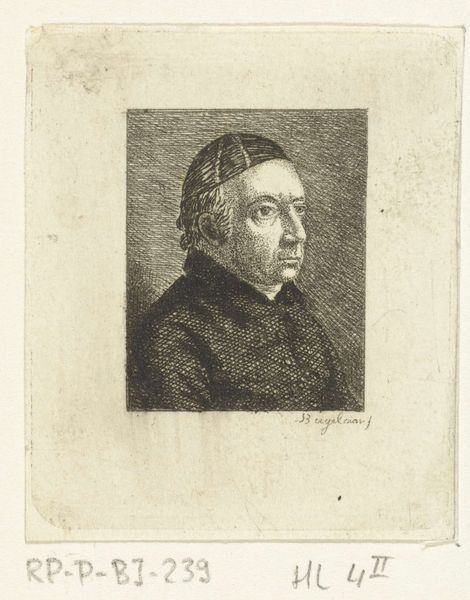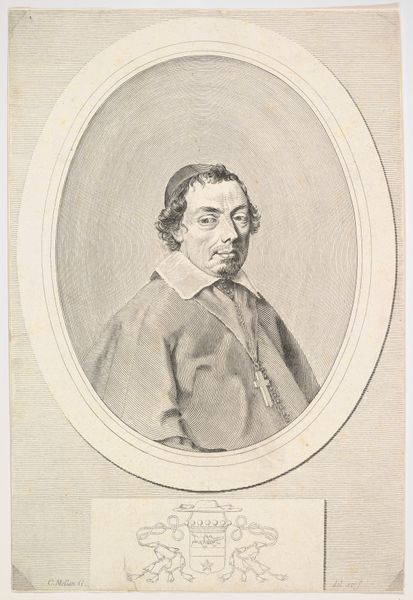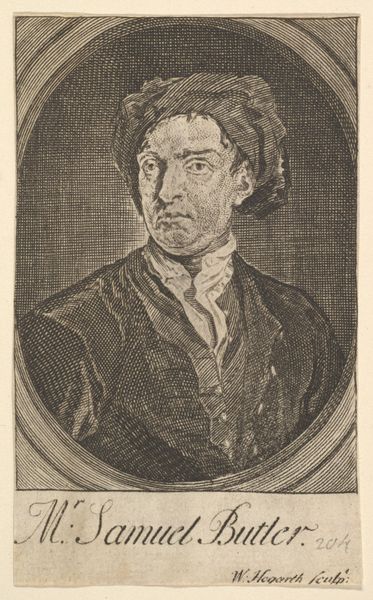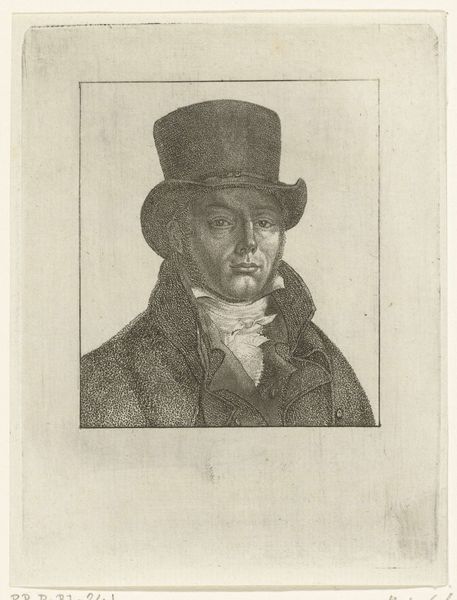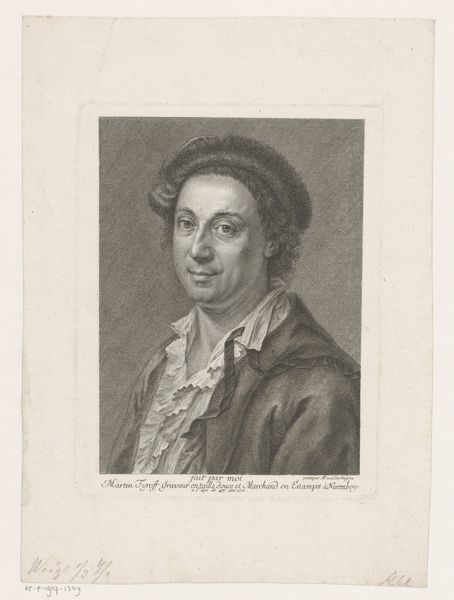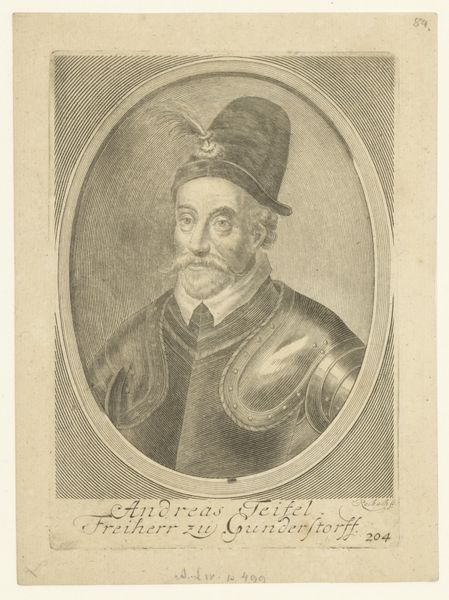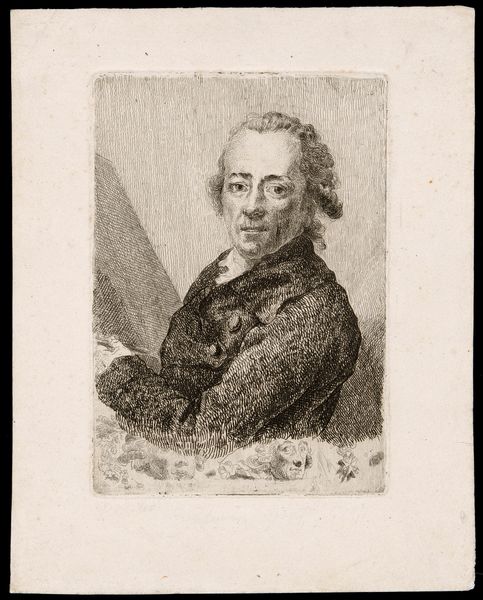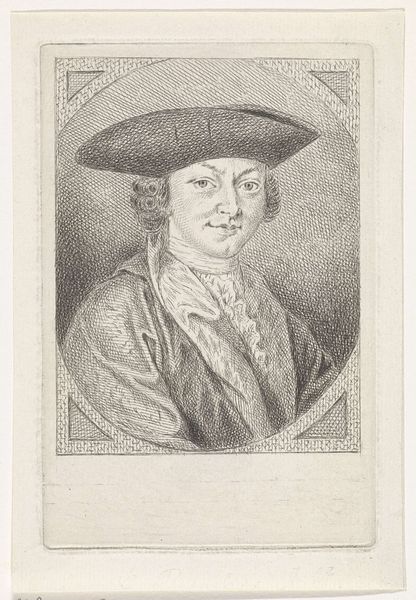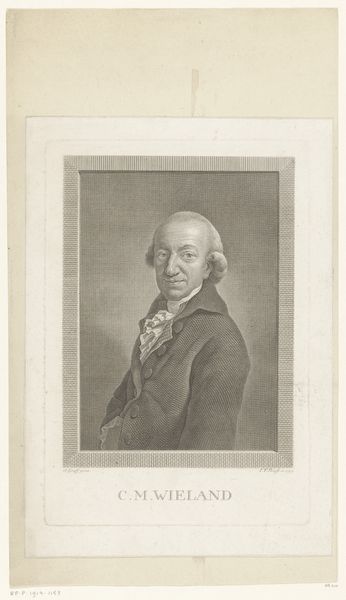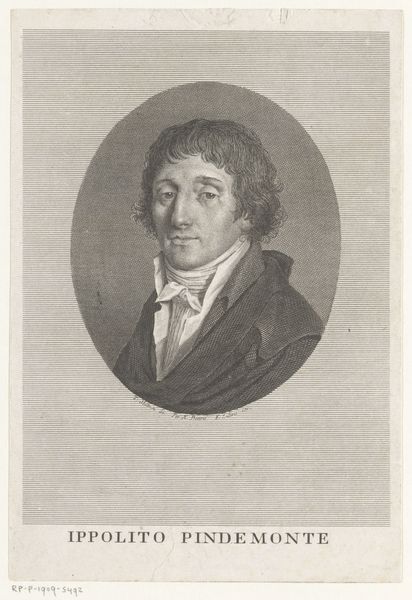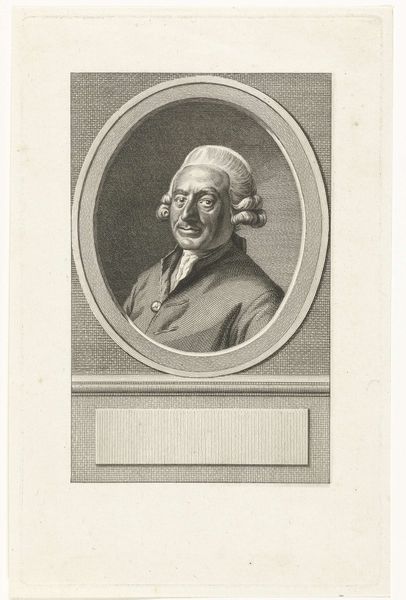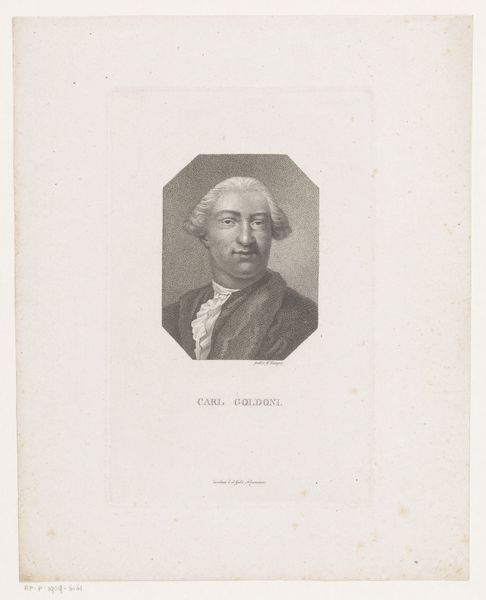
engraving
#
portrait
#
baroque
#
caricature
#
figuration
#
pencil drawing
#
line
#
portrait drawing
#
engraving
#
portrait art
Dimensions: height 294 mm, width 215 mm
Copyright: Rijks Museum: Open Domain
Curator: Looking at this engraving, "Portret van de schilder Jean Baptiste Monnoyer," dating sometime between 1699 and 1776, currently held at the Rijksmuseum... I’m immediately drawn to the sitter's almost unnerving intensity, conveyed entirely through line. The texture of his clothing, particularly that beret, feels incredibly rich despite the limited tonal range. Editor: There’s something about the way his eyes are rendered; a deep concentration mixed with what feels like weariness. Considering its context, it gives me a sense of how artists were viewed, or perhaps wished to be seen. Curator: Absolutely. Formally, it's an excellent example of line engraving, creating volume and depth with remarkable efficiency. The subtle variations in line weight delineate form while contributing a soft, almost atmospheric quality within the portrait. Note the circular frame of the portrait which contains the Baroque sensibility with clarity and discipline. Editor: And "Peintre en Fleurs" there at the bottom translates to 'Painter of Flowers'. We have to think about Monnoyer's legacy as someone famous for still life at a time when floral imagery may have been tied up with femininity and commerce. The gaze in this piece gives him an intellectual depth beyond mere ornamentation. What does this rendering tell us about his status and self-conception? Curator: The artist, Johannes de Groot II, understood Baroque strategies completely. In a portrait such as this, he gives us a play of lines creating textures to mimic material quality, and this helps the picture rise beyond merely rendering someone's surface appearance. This gives it the aura of the Baroque's understanding of humanity and reality. Editor: Right. And you can see how that level of detail, those subtle nuances, aimed to project something about the individual. The portrait's purpose exceeds that of mere illustration; it's also constructing identity, making arguments about character and, yes, artistry in a particular time. It makes one consider what an image says beyond what it depicts, right? Curator: Indeed. I find the level of control and articulation the artist managed in an age so different from our own striking. It speaks to the fundamental artistic quest of distilling experience into resonant form. Editor: It certainly brings history alive, reminding us that behind every work, there are real people. In particular, the image asks us how an individual at once reflected and rebelled against their prescribed gender and class identity.
Comments
No comments
Be the first to comment and join the conversation on the ultimate creative platform.
